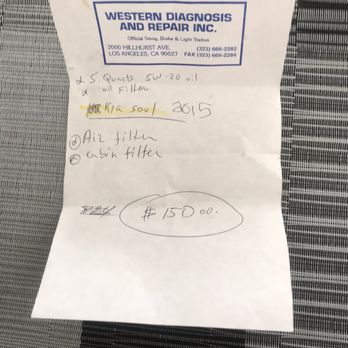A Parent’s Guide to Understanding Western Diagnostic Techniques
Hey there, super moms and dads! Are you trying to make sense of all the medical jargon and procedures that come with your child’s healthcare? Fear not, because we’ve put together an A-to-Z guide on Western diagnostic techniques that will transform you from puzzled to proficient! Ready to become savvy about your little one’s health? Let’s dive in!
What Are Western Diagnostic Techniques?
First things first, let’s talk about what we mean by “Western diagnostic techniques”. These are the methods doctors use in modern medicine to figure out what might be going on inside our bodies. From X-rays to blood tests, these practices are scientifically tested to ensure accuracy and safety for your precious bundles of joy.
The Importance of Accurate Diagnostics
Why are accurate diagnostics so important? It’s quite simple: the right diagnosis means the right treatment. It’s like being a detective, where each clue brings you closer to solving the mystery. And when it comes to your child’s health, you want to be on the dot each time!
Blood Tests: The Basic Yet Mighty Tools
The Complete Blood Count (CBC)
Think of the CBC as the first peek into your child’s health. This basic blood test gives a wealth of information about the kinds of cells floating in your kid’s bloodstream. It can unveil things like anemia, infections, and even some leukemias. But don’t you worry – it’s a quick and straightforward test that tells a lot with just a small sample of blood.
Blood Chemistry Panel
This panel is like a snapshot of your child’s metabolism. It can check glucose levels, kidney and liver function, and electrolyte balance. Is your little one constantly thirsty, or more tired than usual? This could be the test that provides some answers.
Imaging Techniques: A Closer Look Inside
When your pediatrician wants to “see” what’s happening inside, they turn to imaging techniques. Let’s take a look at some of the most common ones:
X-Rays: Chances are you’ve heard about X-rays – yes, the same ones that reveal if a bone is broken. They use low levels of radiation to peek into the body, and they’ve been doing a fantastic job for over a century!
Ultrasounds: No radiation here! Ultrasounds are safe and sound (pun intended) ways to image soft tissues. They’re great for looking at organs and even observing a baby in the womb. Plus, they’re real-time, which means you can see the action as it happens!
What to Expect During a Diagnostic Test
Now, let’s talk about what to expect during these tests. It’s totally normal for both you and your youngster to feel a little anxious. However, knowing what’s going to happen can really help with the butterflies.
Doctors and technicians are trained not just in the science, but also in providing reassurance. They’ll guide you through each step and can answer any questions you have. It’s okay to ask for more information or for a little extra time to comfort your child.
Quick Tips for Test Day
- Keep explanations simple and positive.
- Bring a favorite toy or blanket for comfort.
- After the test, celebrate with a treat or a fun activity!
Remember, each diagnostic test provides valuable information that will help your pediatrician care for your child. The tests are often quick, and the rewards of having a clear direction in terms of healthcare are immense.
Stay tuned! In the next installment, we’ll unpack even more diagnostic tests and provide helpful tips on navigating complex healthcare situations. Remember, a little knowledge goes a long way in making you an empowered health advocate for your kiddo!
To all the moms and dads out there, kudos for embarking on this journey of understanding. Keep being the superhero that your child believes you to be, armed with love, courage, and now, a deeper insight into Western diagnostics!
Hang in there, your journey through the world of Western diagnostics and ensuring the best for your child’s health is becoming more enlightening with every word you read. By demystifying the process, you’re taking impressive steps towards being an even more amazing parent!

5 Vital Prep Steps for Parents Awaiting Western Diagnostic Tests
Preparation is key when it comes to navigating the world of diagnostic tests successfully with your child. Here are five essential things you need to know to make the experience as smooth as possible for both you and your little one.
1. Understand the Procedure
Knowledge truly is power. Before your child undergoes any diagnostic test, invest some time in understanding what the procedure involves. Whether it’s a simple blood draw or a more complex MRI, knowing the ins and outs can help you explain it to your child and prepare them mentally for what’s to come.
2. Discuss Your Child’s Fears and Feelings
Children can have fears and anxiety about medical procedures. It’s important to have an open conversation with your child about what they can expect. Explain that these tests help the doctors keep them healthy. Keeping the dialogue age-appropriate and honest can alleviate some of their concerns.
3. Plan for Comfort and Distraction
Comfort objects like a favorite toy, book, or blanket can be a great source of solace for a child in an unfamiliar environment. Also, consider distraction techniques like telling a story, playing a game on a tablet, or watching a favorite show during the waiting period or even during some tests where movement isn’t restricted.
4. Pre-Test Nutrition and Sleep
Ensure your child has a good night’s sleep before the day of the test. Some tests might require fasting or have special dietary restrictions beforehand, so make sure you follow the instructions provided by your healthcare provider. A well-rested and -nourished body can cope much better with the stress of diagnostic testing.
5. Practice Relaxation Techniques
Teaching simple relaxation techniques such as deep breathing or progressive muscle relaxation can be beneficial. Practice these techniques together in the days leading up to the test so that your child can use them to manage anxiety both before and during the procedure.
Having a firm grasp of these preparatory steps will not only make you feel more in control but also signal to your child that there is nothing to fear. Your positivity and calm will be infectious and set the tone for a smoother experience.
Continuing Your Diagnostic Journey
Now that you’ve got the introductory course on Western diagnostic techniques and know how to prepare your young one, keep an eye out for our following guides. We will cover more advanced diagnostics, tips on dealing with long-term care, and strategies to engage with healthcare professionals.
It’s heartwarming to see how much you care and want to be involved in your child’s health. Whether it’s understanding the nuts and bolts of a CT scan or finding the best ways to interpret lab results, we’ll be with you every step of the way. Let’s continue to learn, grow, and provide the highest level of care that our children deserve!
For the next update, remember to check back with us soon. We’ll have more insider info, more handy hints, and more comforting guidance just for you, our amazing cohort of action-taking, health-savvy parents!
For more great articles please see here. For more information see here
Disclaimer
The articles available via our website provide general information only and we strongly urge readers to exercise caution and conduct their own thorough research and fact-checking. The information presented should not be taken as absolute truth, and, to the maximum extent permitted by law, we will not be held liable for any inaccuracies or errors in the content. It is essential for individuals to independently verify and validate the information before making any decisions or taking any actions based on the articles.




